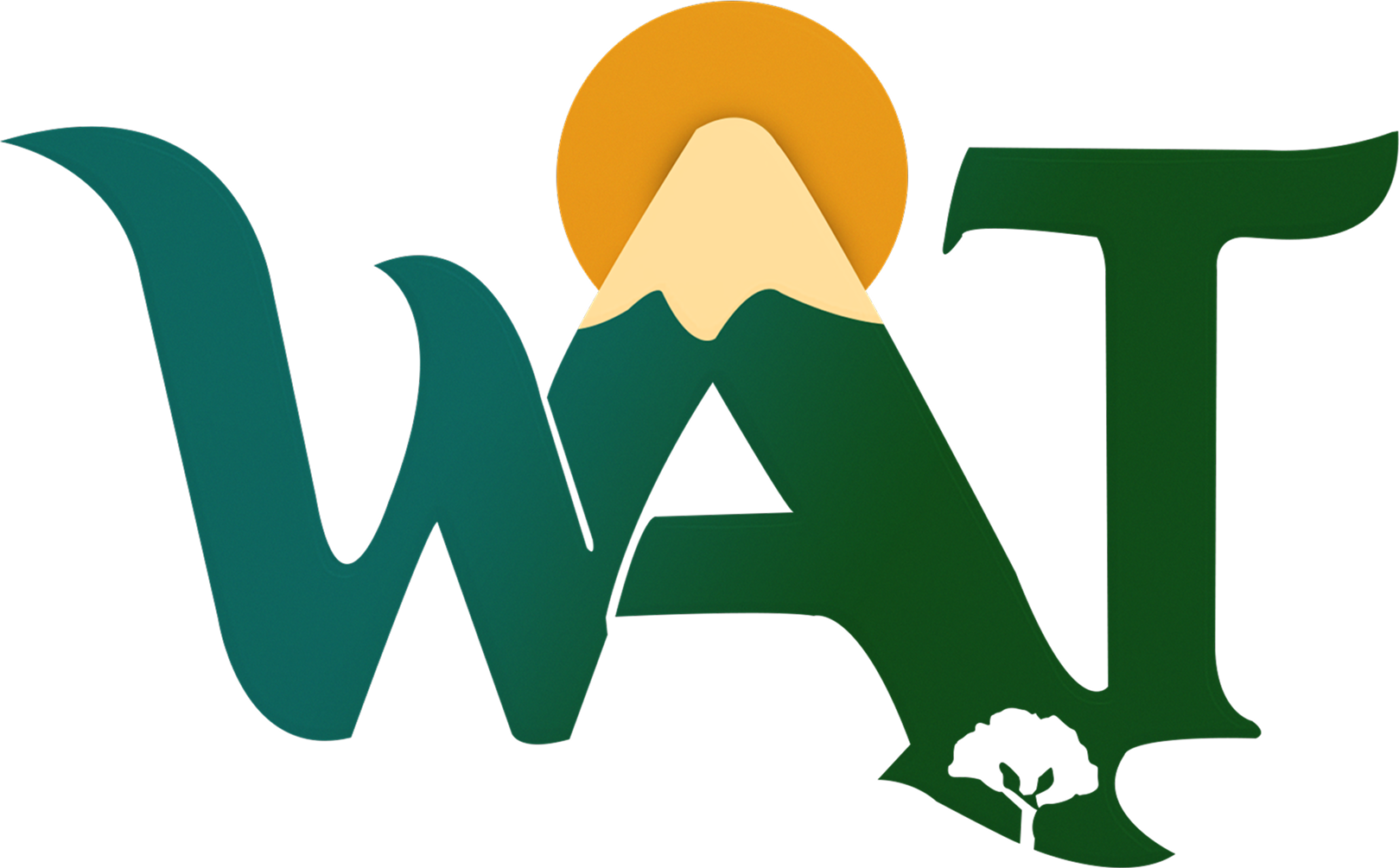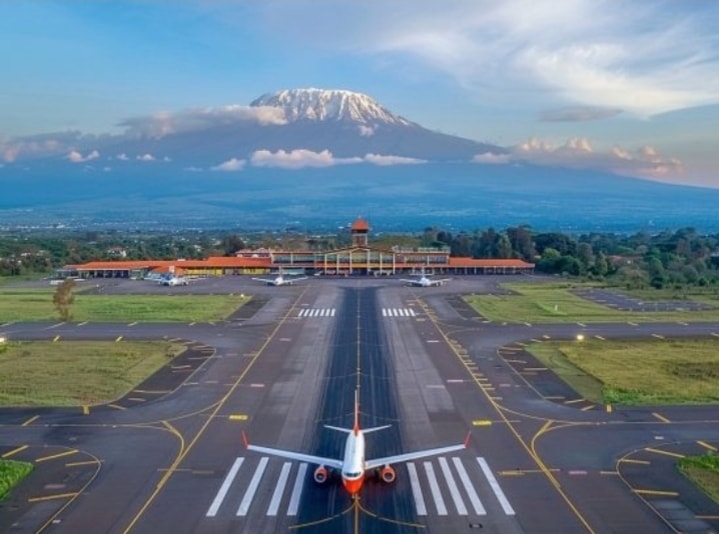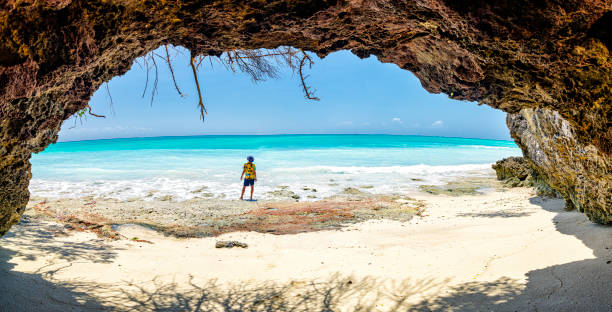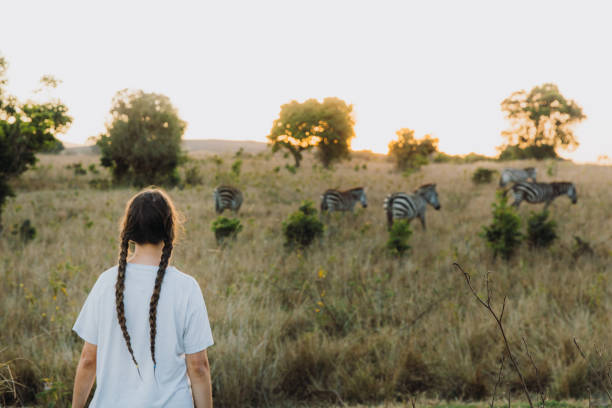Essential Tips for Preparing to Climb Kilimanjaro Successfully

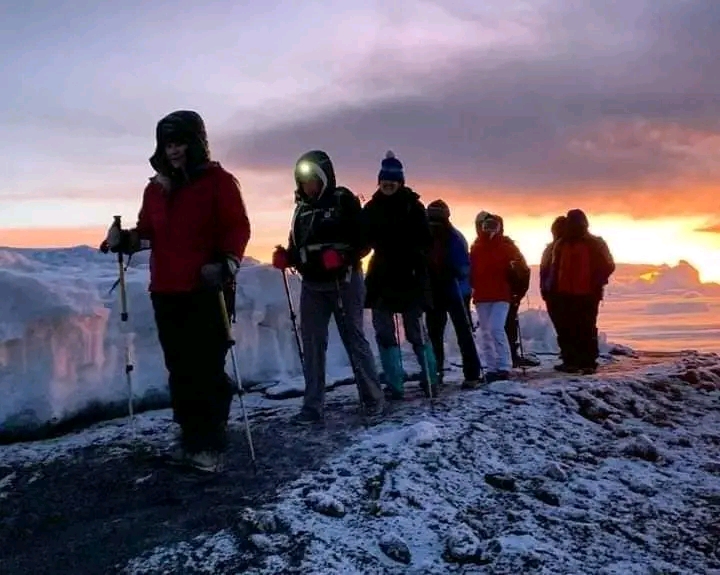
Standing at 5,895 meters (19,341 feet) above sea level, Mount Kilimanjaro is a beacon for adventurers worldwide.
As the highest free-standing mountain on the planet, its snow-capped peak rises dramatically from the plains of Tanzania.
The journey to its summit is an achievable dream for many, but it is not a simple walk in the park. Successfully climbing Kilimanjaro requires careful planning, dedicated physical preparation, and a profound respect for the mountain's power.
This comprehensive guide will walk you through every critical aspect of preparing for your Kilimanjaro climb.
From building the right fitness level to understanding the invisible challenge of high altitude, we provide the essential tips to help you stand on Uhuru Peak and achieve a truly successful climb.
Whether you are a seasoned hiker or a determined beginner, the right preparation is the key to unlocking this once-in-a-lifetime experience on Kilimanjaro.
The Commitment: Preparing to Climb Kilimanjaro
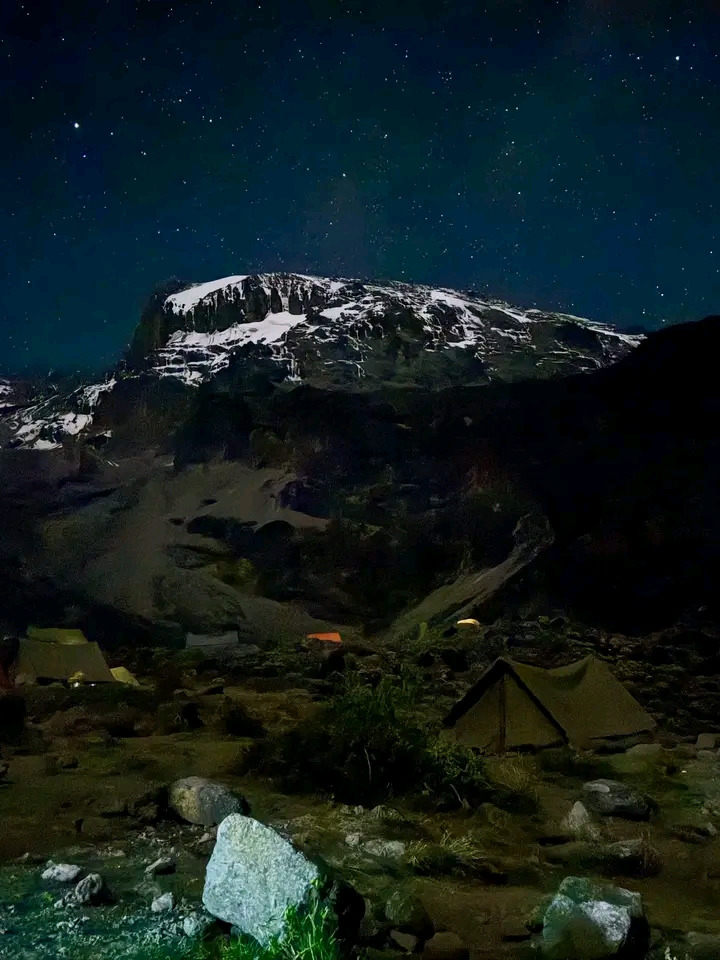
Embarking on a Kilimanjaro trek is a significant undertaking.
The first step in preparing to climb Kilimanjaro is understanding the commitment it requires.
This isn't just a week-long hike; the journey begins months before you even set foot in Tanzania.
The Mental Game
Your mental state is just as crucial as your physical fitness.
Developing a positive mental outlook is fundamentally important for building the confidence needed to reach the top of Kilimanjaro.
You must be prepared for long days, challenging conditions, and moments of doubt.
A resilient and positive attitude can be the deciding factor during the toughest parts of the climb.
The Time Investment
A successful Kilimanjaro climb necessitates a significant time commitment that starts long before your scheduled climb.
You will need to dedicate several months to your physical training, researching and purchasing the right gear, and organizing the logistics of your trip.
Don't underestimate the time needed for this thorough physical preparation.
The Foundation: Physical Training for Your Kilimanjaro Climb
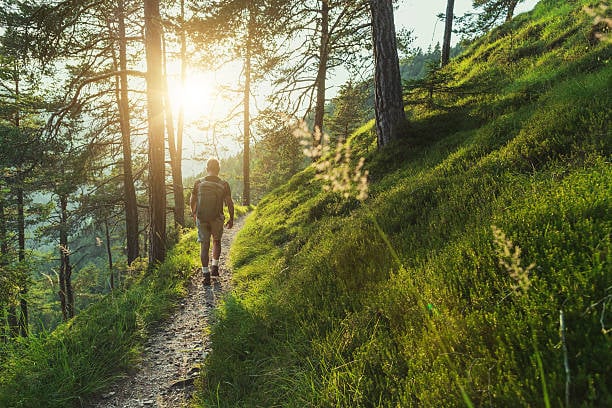
Your body will be your most important piece of equipment on Mount Kilimanjaro.
A dedicated physical training regimen is non-negotiable.
Training for your Kilimanjaro trek should focus on building both endurance and strength to handle multiple consecutive days of long-distance hiking on varied terrain.
A good fitness level is paramount.
How Long Should You Train?
The timeline for your physical training can vary based on your starting fitness level, but a common recommendation is to start your training program at least two to three months before your trip.
Experts suggest that training for Kilimanjaro requires a minimum of 8 weeks of consistent preparation to build the necessary stamina for climbing Kilimanjaro.
Building Endurance: The Core of Kilimanjaro Training
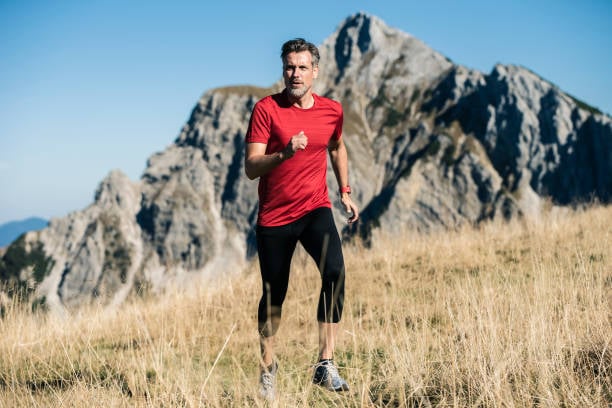
Endurance is the single most important physical attribute for climbing Kilimanjaro. The goal is to prepare your body for walking "pole pole" (slowly, slowly) for 6-8 hours a day.
Your exercise regime should be robust. Climbers should engage in regular aerobic training 3-4 days a week to prepare for Kilimanjaro. Excellent aerobic exercises include jogging, cycling, swimming, and brisk walking.
To truly prepare, you should aim for 5-6 days of training per week. This consistency is what builds a deep well of stamina.
Monitoring your heart rate during training helps to ensure that you are working at the correct intensity for endurance.
Aim for a sustained heart rate in your target aerobic zone. These aerobic exercises are foundational to your success.
The Best Practice: Training Hikes
The absolute best way to prepare for a multi-day hike is by doing it. Hiking outdoors, especially on varied terrain that isn't just flat terrain, is the most effective way to prepare for the specific demands of a Kilimanjaro climb.
Your training hikes should progressively get longer and more challenging. Practicing hiking for long durations is crucial; you should ideally build up to 5+ hour uphill and downhill hikes to simulate a day on the mountain.
Multi-day training or hiking prior to your Kilimanjaro climb is extremely important. If possible, complete back-to-back long hikes on a weekend to get your body accustomed to performing without a full day of rest.
Furthermore, carrying a weighted backpack during your practice hiking is essential for building endurance and strength. Start with a light pack and gradually increase the carrying weight to about 10-15 kg (22−33 lbs) to mimic what you'll carry in your own daypack on Kilimanjaro.
Building Power: Strength Training for the Mountain
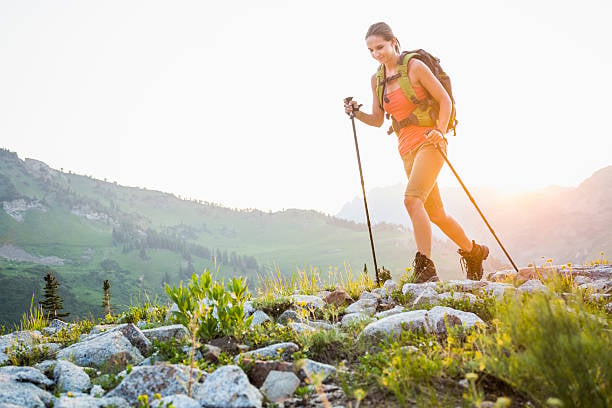
While endurance is key, strength training should not be neglected.
A solid core and strong legs will help you power up steep sections and maintain stability on uneven ground.
Your strength training should include exercises specifically for the legs and core to prepare for the climbing demands.
Focus on movements like squats, lunges, deadlifts, and planks. Consistent strength training two to three times per week will make a significant difference.
Specialized Training: Gym Training and Simulators
If you lack access to suitable hiking trails, the gym offers excellent alternatives. Gym training can be a powerful supplement to your Kilimanjaro training.
The Stair Master machine is a fantastic tool for simulating the constant uphill motion of climbing Mount Kilimanjaro.
Using an incline treadmill is another effective way to build leg strength and cardiovascular fitness for the trek. The Stair Master machine is particularly effective.
Can an Altitude Simulator Help?
One of the biggest challenges of climbing Kilimanjaro is the high altitude and the corresponding lack of oxygen.
Simulating high altitude training can involve using an altitude mask or even a specialized altitude simulator tent if high-elevation hikes are not possible. An altitude simulator can help your body begin the process of adapting to conditions with less oxygen.
For those who live near mountains, practicing hiking at altitude is incredibly beneficial for both acclimatization and physical readiness for Kilimanjaro.
Nothing beats real-world experience at high altitude. An altitude simulator is the next best thing.
Choosing Your Path: How to Select the Best Kilimanjaro Route
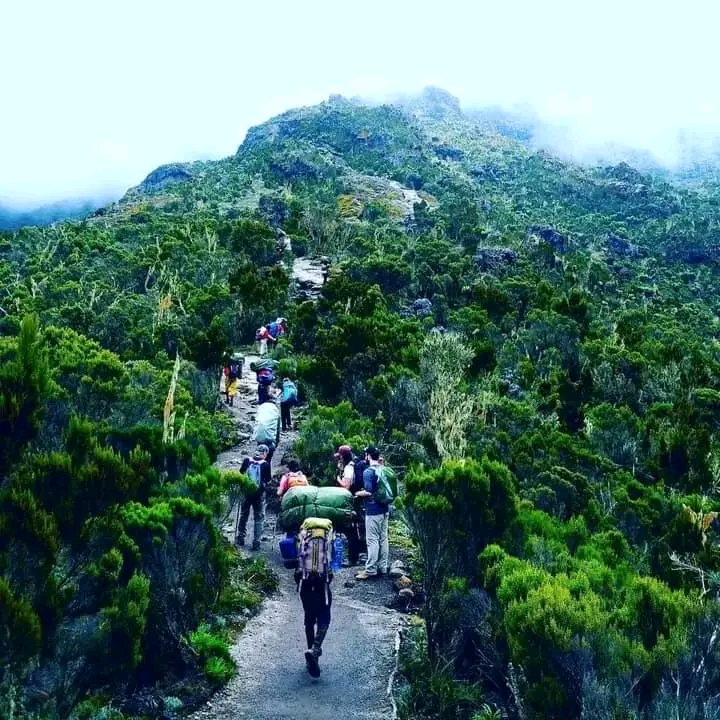
There are seven main routes up Kilimanjaro to choose from, each offering a unique experience in terms of scenery, difficulty, traffic, and acclimatization profile.
The Kilimanjaro route you select has a direct impact on your chances of a successful summit.
Routes vary in journey lengths from five to nine days depending on the chosen path. This duration is critical, as the ascent duration directly impacts the acclimatization process, which in turn affects summit success rates.
Generally, longer routes that allow for better acclimatization see higher success.
The Scenic Routes: Machame and Lemosho
The Machame Route is renowned for being one of the most scenic routes on Mount Kilimanjaro. It offers incredible views and a great acclimatization profile, though it is very popular.
The Lemosho route is another favorite, known for its beauty and high success rates.
The Lemosho Route boasts one of the best summit success rates for climbing Kilimanjaro, largely due to its length and gradual ascent. An 8-day Lemosho route is highly recommended for better acclimatization.
The Longest and Most Gradual: The Northern Circuit
For those with time, the Northern Circuit is arguably the best Kilimanjaro route.
It passes around the quiet, remote northern slopes and is the longest route offered, typically taking 9 days.
This extended time on the mountain provides unparalleled acclimatization, leading to very high success rates. The Northern Circuit offers a unique perspective of Kilimanjaro.
The "Coca-Cola" Route: Marangu
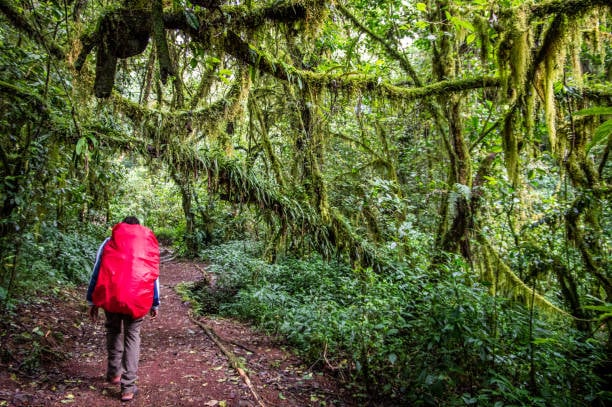
The Marangu Route is considered the easiest route on paper and is the only one with dormitory-style hut accommodations.
However, its shorter duration can lead to poor acclimatization, and it is also the busiest trail on the mountain.
The Quieter Approach: The Rongai Route
The Rongai Route approaches Kilimanjaro from the north, near the Kenyan border.
Its primary advantage is that it is less crowded and traverses a drier part of the mountain, making it a good choice during the rainy season.
The Rongai route is a solid option.
The Challenging Routes: Umbwe and Shira
The Umbwe Route is the shortest, steepest, and most difficult route on Kilimanjaro.
It is only recommended for very experienced mountaineers with a proven ability to acclimatize quickly. It is considered a very difficult route with low success rates.
The Shira Route has a high starting altitude, which can significantly increase the chance of altitude sickness. Climbers are driven to a high point on the Shira Plateau, which can be a shock to the system.
Ultimately, longer routes like the 9-day Northern Circuit or 8-day Lemosho Route significantly increase your acclimatization time and, therefore, your chances of reaching the summit safely.
The Invisible Challenge: Understanding Altitude Sickness on Kilimanjaro
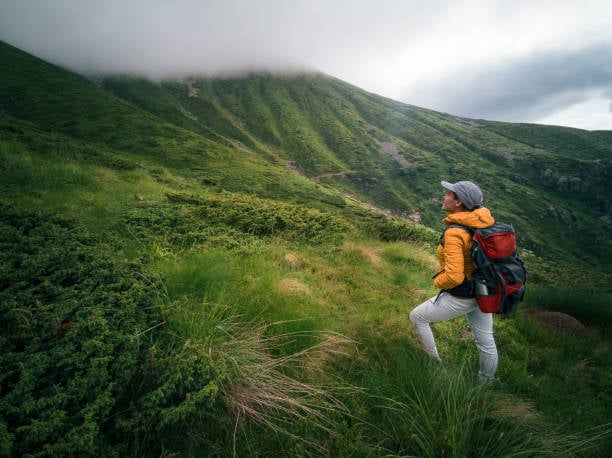
No matter how physically fit you are, you are susceptible to altitude sickness at the high altitude of Mount Kilimanjaro.
This is the single biggest reason climbers fail to reach Uhuru Peak. Proper acclimatization is therefore critical for a successful climb to the summit of Kilimanjaro.
Altitude sickness, in its basic form, occurs when the body reacts negatively to ascending to high elevations too quickly, primarily due to the lower partial pressure of oxygen.
At high altitude, there is simply less oxygen available for your body with every breath.
Over 75% of climbers experience at least mild symptoms of altitude sickness when ascending above 3,000 meters (9,842 feet).
What is Acute Mountain Sickness (AMS)?
Acute mountain sickness (AMS) is the mildest and most common form of altitude sickness.
Its symptoms can feel like a bad hangover and often include headaches, nausea, dizziness, loss of appetite, and fatigue. Recognizing these signs early is key.
Preventing Altitude Sickness: The "Pole Pole" Philosophy
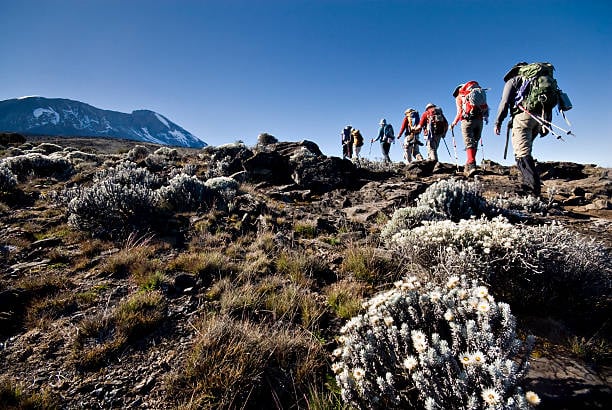
The golden rule on Kilimanjaro is "pole pole," which means "slowly, slowly" in Swahili.
Your guides will constantly remind you of this. To prevent altitude sickness, climbers should allow for adequate time to acclimatize by not ascending too quickly to high altitudes.
This is why longer routes are better. Routes that are longer generally allow for better acclimatization compared to shorter, steeper routes.
Many itineraries will also wisely integrate specific acclimatization days, where you hike to a higher elevation during the day and descend to a lower elevation to sleep (“climb high, sleep low”).
Even before your trip, you can seek out opportunities for acclimatization.
Some studies suggest that even spending time in gardens or parks at moderate elevations, if available, can help prepare the body for the gradual changes it will face at high altitude on Kilimanjaro.
Recognizing and Responding to Symptoms
It is imperative that climbers recognize and report any symptoms of altitude sickness to their guides immediately.
Your tour operator and guides take this extremely seriously, as untreated AMS can progress to life-threatening conditions.
More severe forms of altitude sickness can develop and are a serious concern.
Reputable operators will conduct daily health checks. Monitoring your health through tools like a pulse oximeter, which measures your blood oxygen saturation, is essential during the climb to manage altitude sickness risk. If symptoms persist or worsen, the only cure is to descend.
Gearing Up: The Essential Kilimanjaro Gear List
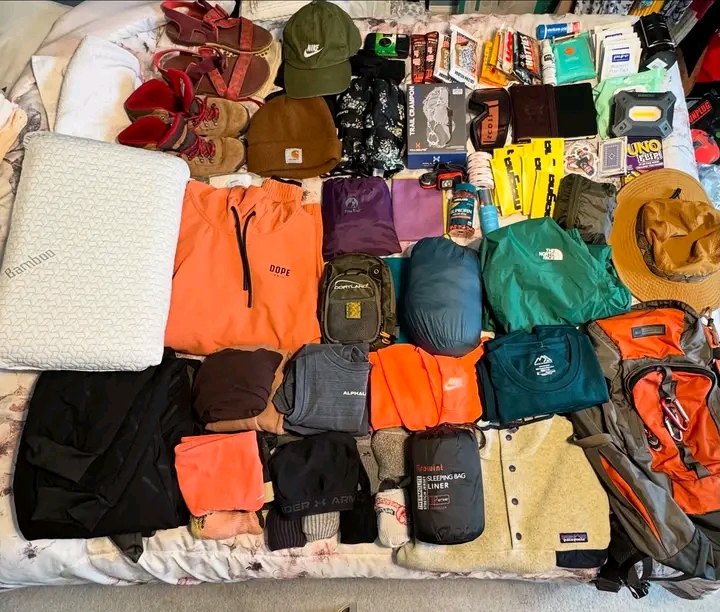
Having the right gear is non-negotiable for a safe and comfortable Kilimanjaro climb.
The mountain takes you through five distinct climate zones, from tropical rainforest to arctic conditions at the summit.
Therefore, climbing Kilimanjaro requires the right gear to stay warm, dry, and comfortable in these ever-changing weather conditions.
A crucial tip is to get used to your gear before the climb. Breaking in your boots and testing your layers on training hikes is crucial to ensure comfort and prevent issues on the trek.
Layering is Key: Technical Clothing
The layering system is the most effective way to manage your body temperature. Wearing proper clothing layers is crucial as climbers face extreme temperature changes from the base to the summit.
Climbers need technical clothing for the various climate zones on Kilimanjaro, including a waterproof jacket, fleece jacket, and multiple baselayers (both lightweight and heavyweight).
Your personal gear must be high quality. You will also need essential rain gear.
Essential Outerwear: The Down Jacket and Waterproofs
A high-quality, warm down jacket is one of your most important pieces of gear.
The down jacket is essential for the cold nights spent at camp and for the extreme cold you will face on your summit attempt. Ensure it is well-insulated.
Protecting Your Extremities: Head, Hands, and Feet
Your extremities are the first to get cold at high altitude. Protecting them is vital.
The Indispensable Head Torch
A reliable head torch is an absolute necessity.
You will use your head torch every night in camp and, most critically, during the entirety of your summit night ascent, which begins in complete darkness.
Pack extra batteries for your head torch.
Footwear and Socks
Waterproof hiking boots with good ankle support are a must.
As mentioned, it is important for climbers to break in their trekking boots well before the climb to prevent painful blisters.
Pair them with high-quality wool or synthetic hiking socks. You'll want several pairs, including very thick socks for the summit.
Gloves and Hats
Cold weather gear such as warm hats (a beanie or fleece-lined hat), a sun hat, and multiple pairs of gloves (liner gloves and insulated waterproof mittens) are essential for climbing Kilimanjaro.
Your Home on the Mountain: Sleeping Gear
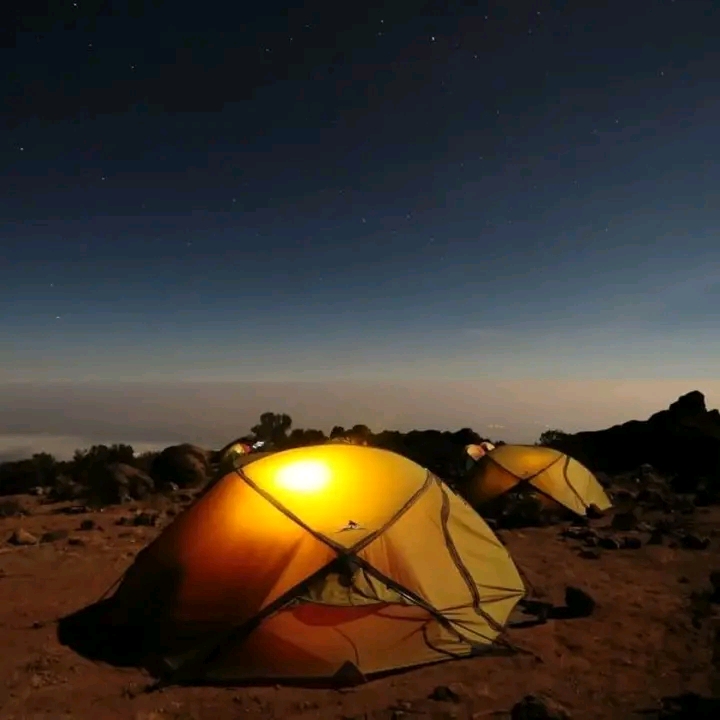
A warm sleeping bag is critical for recovery and rest during the cold nights on Kilimanjaro. A four-season or winter sleeping bag rated to at least −15∘C (5∘F) is recommended. A good sleeping bag makes a huge difference.
Carrying Your Essentials: Backpacks and Duffel Bags
You will use a two-bag system. Your main gear will go into a large, waterproof duffel bag (80-90 liters), which will be carried by your porter.
You will be responsible for carrying your own daypack. This 30-40 liter pack will contain everything you need for the day's hike, including water, snacks, extra layers, sun cream, and a camera. Carrying a daypack with food, water, and clothing is required as you need to manage your own supplies during the trek.
Other Critical Personal Gear
The list of personal gear is long, but some other essentials include trekking poles, high-UV protection sunglasses, a water bladder or bottles, high-energy snacks like energy bars, and a first-aid kit. Remember that climbers should bring a range of Kilimanjaro gear to safely complete the journey from rainforest to snow and glaciers.
To Buy or To Rent?
The cost of acquiring all the necessary Kilimanjaro gear can be substantial. For climbers starting from scratch, renting gear is a viable option to reduce the cost of necessary equipment. Many items, like a down jacket or sleeping bag, can be rented from your tour operator in Tanzania.
The Logistics of a Kilimanjaro Climb
With your training and gear sorted, it's time to focus on the logistics. How you plan your trip can be as important as your physical conditioning. Now you are ready to plan your attempt to climb Mount Kilimanjaro.
Choosing a Reputable Tour Operator
Your choice of tour operator is arguably the most important decision you will make. The Kilimanjaro climbing industry is vast, with hundreds of companies.
A good tour operator ensures your safety, provides experienced guides, treats its porters ethically, and maximizes your chance of success.
Look for reviews, ask about safety protocols, and ensure they are a registered company. A reputable tour operator is your best asset on the mountain. Your tour operator will have a significant impact on your overall experience climbing Kilimanjaro.
Most trekking companies provide communal equipment such as tents and cooking items, but climbers are responsible for their personal gear.
A good tour operator will guide you on this. They are also responsible for the welfare of the local community they employ.
Understanding the Costs
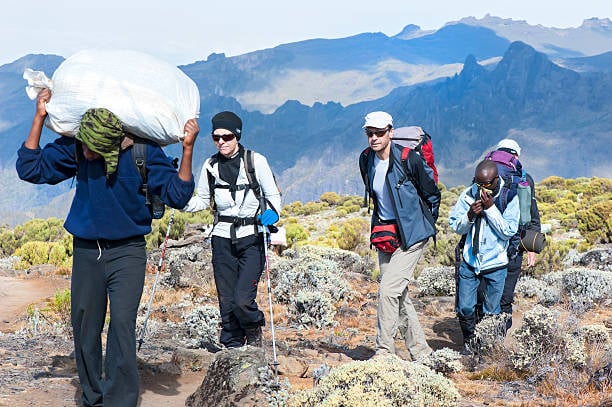
The cost of climbing Kilimanjaro varies widely. Generally, climbing Kilimanjaro costs between $1900 - $5700 USD depending on the length of your route and the tour operator you use.
Budget tour operators charge between $1,500 and $2,000 per person for a seven-day climb.
Mid-range tour operators generally charge between $2,000 and $3,200 per person.
Luxury tour operators typically charge above $3,200.
A significant portion of this cost goes to Kilimanjaro National Park fees. Park entrance fees to climb Kilimanjaro can cost around $750 - $1000 USD, depending on the duration of your trek. These park fees are non-negotiable.
Lengthy climbs, such as eight or nine-day treks, tend to cost more because they incur additional daily park fees and crew wages. Remember that different tour operators will have varying inclusions and exclusions when pricing their packages.
Don't Forget the Tips and Insurance
Tips for your mountain crew (guides, cooks, porters) are customary and an extremely important part of their income. This should be factored into your budget.
Comprehensive travel insurance is mandatory. Ensure your travel insurance policy specifically covers high-altitude trekking up to 6,000 meters. Do not leave home without adequate travel insurance.
Getting There: Flights and Arrival
Most climbers fly into Kilimanjaro International Airport (JRO), located between the towns of Arusha and Moshi.
These towns are the main hubs for any Kilimanjaro trek. Alternatively, some travelers fly into Dar es Salaam (DAR) and then take a domestic flight to Kilimanjaro International Airport.
Plan to arrive at least one or two days before your climb starts to rest and acclimatize from your flight. Your tour operator can help arrange transfers from Kilimanjaro International Airport.
The Final Ascent: What to Expect on Your Kilimanjaro Trek
Once you pass through the gates of the Kilimanjaro National Park, your adventure truly begins.
You will trek through lush rainforests, moorlands dotted with unique flora, and across a stark alpine desert before reaching the arctic summit zone.
The weather conditions can change rapidly. A successful climb of Mt Kilimanjaro awaits.
The Ultimate Challenge: Summit Night
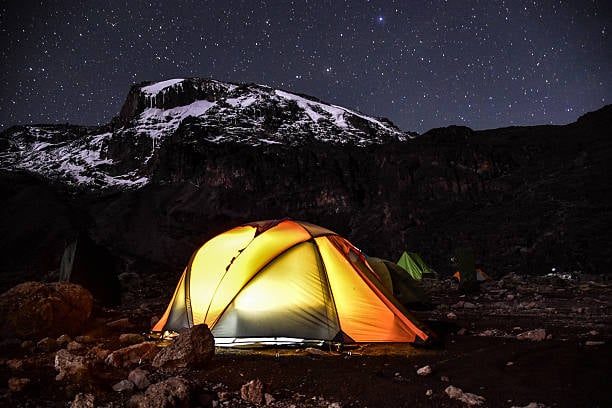
The summit attempt is the culmination of your entire journey.
It typically begins around midnight, a final push in the dark and cold.
This is the ultimate test of your physical and mental preparation.
This part of climbing Kilimanjaro is grueling but immensely rewarding.
Your head torch will light the way as you follow your guide's feet.
Reaching Uhuru Peak
After hours of steady climbing, you'll reach the crater rim at Stella Point as the sun rises over the African plains.
The final push along the rim takes you to the true summit: Uhuru Peak. The feeling of reaching the summit of Mount Kilimanjaro, Africa's tallest mountain, is indescribable.
To reach Uhuru Peak is to achieve something truly special. This successful summit is a testament to your hard work and perseverance.
Kilimanjaro requires dedication, and this is the payoff.
Conclusion: Your Successful Climb Awaits
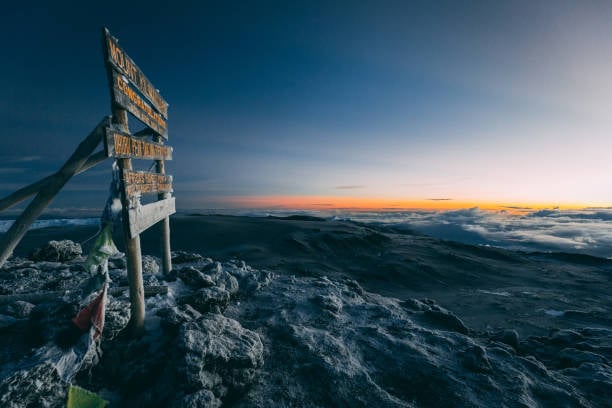
Climbing Kilimanjaro is a journey of a lifetime.
It is a profound challenge that pushes your limits and rewards you with breathtaking beauty and an unparalleled sense of accomplishment.
Success on the highest mountain in Africa does not come from luck; it comes from meticulous preparation.
By focusing on a dedicated training program, investing in the right gear, choosing the best Kilimanjaro route for acclimatization, and selecting a reputable tour operator, you give yourself the best possible chance of reaching Uhuru Peak.
The mountain demands respect, but with a positive attitude and the right approach, climbing Kilimanjaro is an achievable dream.
Your adventure on the roof of Africa starts now.
Frequently Asked Questions About Climbing Kilimanjaro
Here are answers to some common questions people have when they decide to climb Mount Kilimanjaro for the first time.
Can a complete beginner climb Mount Kilimanjaro?
Absolutely. One of the beautiful things about this challenge is that you do not need technical climbing or mountaineering experience. The routes are essentially long-distance hiking trails.
However, "beginner" does not mean "unprepared." A beginner must commit to a serious physical training plan to build the endurance required for consecutive days of hiking.
Success hinges on your fitness level, mental resilience, and choosing a longer route (7+ days) that allows your body to acclimatize properly to the high altitude.
What is the hardest part of the climb?
Universally, the most difficult part of climbing Kilimanjaro is the summit attempt.
This final push begins around midnight and involves trekking for 6-8 hours uphill in the dark, often in sub-zero temperatures and at an extreme altitude where oxygen is scarce.
It is a grueling test of both physical and mental strength. The long, pounding descent after reaching the peak is also surprisingly challenging for exhausted climbers and their joints.
How do I choose the right route for me?
Choosing your path is a crucial part of your preparation.
There are seven routes officially recognized by the Kilimanjaro National Park authorities. To select the best one, consider your priorities.
If maximizing your summit success rate is the goal, choose a longer route like the 8-day Lemosho or 9-day Northern Circuit for superior acclimatization.
For spectacular scenery, Machame and Lemosho are top contenders.
If you wish to climb Mt Kilimanjaro on a quieter trail, the Rongai route is an excellent option.
Discuss your experience and goals with your tour operator to make the perfect choice.
